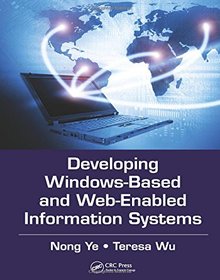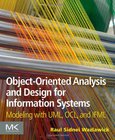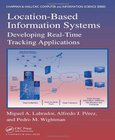Developing Windows-Based and Web-Enabled Information Systems

Book Details:
| Publisher: | CRC Press |
| Series: | CRC Press |
| Author: | Nong Ye |
| Edition: | 1 |
| ISBN-10: | 1439860599 |
| ISBN-13: | 9781439860595 |
| Pages: | 602 |
| Published: | Oct 29 2014 |
| Posted: | Apr 13 2017 |
| Language: | English |
| Book format: | |
| Book size: | 12.89 MB |
Book Description:
Many professionals and students in engineering, science, business, and other application fields need to develop Windows-based and web-enabled information systems to store and use data for decision support, without help from professional programmers. However, few books are available to train professionals and students who are not professional programmers to develop these information systems. Developing Windows-Based and Web-Enabled Information Systems fills this gap, providing a self-contained, easy-to-understand, and well-illustrated text that explores current concepts, methods, and software tools for developing Windows-based and web-enabled information systems. Written in an easily accessible style, the book details current concepts, methods, and software tools for Windows-based and web-enabled information systems that store and use data. It is self-contained with easy-to-understand small examples to walk through concepts and implementation details along with large-scale case studies. The book describes data modeling methods including entityrelationship modeling, relational modeling and normalization, and object-oriented data modeling, to develop data models of a database. The author covers how to use software tools in the Microsoft application development environment, including Microsoft Access, MySQL, SQL, Visual Studio, Visual Basic, VBA, HTML, and XML, to implement databases and develop Windows-based and web-enabled applications with the database, graphical user interface, and program components. The book takes you through the entire process of developing a computer and network application for an information system, highlighting concepts and operation details. In each chapter, small data examples are used to manually walk through concepts and operational details. These features and more give you the conceptual understanding and practical skill required, even if you dont have a computer science background, to develop Windows-based or web-enabled applications for your specialized information system.
Download Link:
Related Books:
Object-Oriented Analysis and Design for Information Systems
Modeling with UML, OCL, and IFML
Object-Oriented Analysis and Design for Information Systems clearly explains real object-oriented programming in practice. Expert author Raul Sidnei Wazlawick explains concepts such as object responsibility, visibility and the real need for delegation in detail. The object-oriented code generated by using these concepts in a systematic way is concise, organized and reusable. The patterns and solutions presented in this book are based in research and industrial applications. You will come away with clarity regarding processes and use cases and a clear understand of how to expand a use case. Wazlawick clearly explains clearly how to build meaningful sequence diagrams. Object-Oriented Analysis and Design for Information Systems illustrates how and why ...
Analysis and Design of Information Systems
3rd Edition
This third edition of the successful information systems guide is a thorough introduction to all aspects of business transformation and analysis. It offers a complex set of tools covering all types of systems, including legacy, transactional, database and web/ecommerce topics and integrates them within a common method for the successful analyst/designer. With additional chapters on topics such as Web interface tools and data warehouse system design, and providing new case studies, it is a valuable resource for all information systems students, as well as professionals....
Location-Based Information Systems
Developing Real-Time Tracking Applications
Drawing on the authors more than six years of RD in location-based information systems (LBIS) as well as their participation in defining the Java ME Location API 2.0, Location-Based Information Systems: Developing Real-Time Tracking Applications provides information and examples for creating real-time LBIS based on GPS-enabled cellular phones. Each chapter presents a general real-time tracking system example that can be easily adapted to target any application domain and that can incorporate other sensor data to make the system "participatory sensing" or "human-centric sensing." The book covers all of the components needed to develop an LBIS. It discusses cellular phone programming using the Java ME platform, positioning technolo...
2007 - 2021 © eBooks-IT.org



